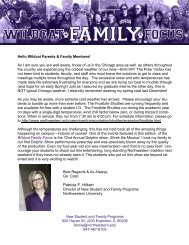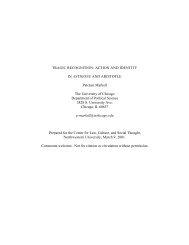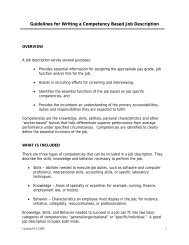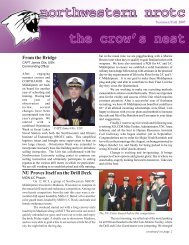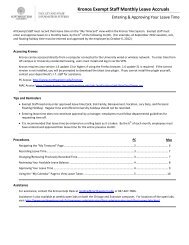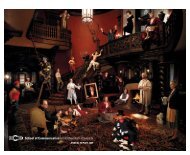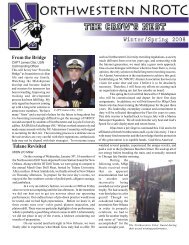Artistry Permits and Custom May Ordain - Northwestern University
Artistry Permits and Custom May Ordain - Northwestern University
Artistry Permits and Custom May Ordain - Northwestern University
You also want an ePaper? Increase the reach of your titles
YUMPU automatically turns print PDFs into web optimized ePapers that Google loves.
30<br />
traded to the East African coast were produced in western Madagascar. 121 From da<br />
Costa’s visit to an isl<strong>and</strong> off northwestern Madagascar comes the most detailed<br />
description of weavers in the Swahili world. Da Costa met women weavers just north of<br />
New Masalajem, a town founded by Kilwan descendants, who used vegetable dyes that<br />
produced “a thous<strong>and</strong> different colors” <strong>and</strong> wove both silk <strong>and</strong> cotton cloths. 122 Labor<br />
was organized in such a manner that textiles could be woven-to-order <strong>and</strong> production was<br />
quite rapid. In general, production seemed to be a cottage industry, relying on the output<br />
of many horizontal looms typically occupying the length of extended corridors in the<br />
houses of non-ungwana. 123<br />
As regionally produced cloths found a growing number of commercial outlets, cloth<br />
production <strong>and</strong> distribution integrated the Swahili world. Textiles made for the coastal<br />
marketplace, like colorful silks or striped cloths, conformed to Swahili aesthetic ideals <strong>and</strong><br />
often appealed to the extremely wealthy in the Swahili world. Thus, contrary to Jarstorf’s<br />
argument that the Swahili preferred imported items to locally manufactured ones, regional<br />
ideas of quality <strong>and</strong> beauty helped sustain a thriving Swahili textile industry. 124 Indeed,<br />
regional textile production even reinforced existing cultural currents that could be<br />
discerned in the dem<strong>and</strong> for certain types of cloths. Residents of the coast demonstrated<br />
their culturedness by consuming Swahili cloth. In fact, production <strong>and</strong> consumption of<br />
both high prestige-value <strong>and</strong> more affordable cloths, like those of Pate <strong>and</strong> Sofala<br />
respectively, entered importantly into the determination of individual status or claims to<br />
status in the Swahili world. It is to the modes of consumption among individual actors in<br />
the Swahili setting that we now turn.<br />
121 Cotton was spun, dyed, <strong>and</strong> woven in southwestern Madagascar. R. Temple, ed., The Travels of Peter Mundy in<br />
Europe <strong>and</strong> Asia. 372.<br />
122 P. Rodrigues da Costa, “Diário de Paulo Rodrigues da Costa,” in Os Dois Descobrimentos da Ilha de São Lourenço,<br />
M<strong>and</strong>ados Fazer pelo Vice-Rei D. Jerónimo de Azevedo nos Anos de 1613 a 1616. Lisbon, 1970. 65-67.<br />
123 Unfortunately, the type of loom in use is not discernible from da Costa’s brief description. All that can be said<br />
is that it was not a vertical loom. In all probability, the looms were either single or double heddled horizontal. See<br />
K. Schaedler’s treatment of East African <strong>and</strong> Malagasy cloths in Weaving in Africa South of the Sahara. Berlin, 1987.<br />
399-441. Elsewhere it seems that cotton weaving may have been organized along clan lines. The Waswahili clan<br />
of Siyu were known as formidable weavers <strong>and</strong> J. de Vere Allen has suggested that the early use of the term<br />
“Swahili” could derive from the popular cloth. This is not evident from any sources known to me. See R. Trillo,<br />
“Fashion <strong>and</strong> Fabrics.”<br />
124 Jargstorf’s assessment may be more accurate for later periods, but this topic deserves greater attention. “To<br />
Squ<strong>and</strong>er <strong>and</strong> Gain at the Same Time,” 240.



